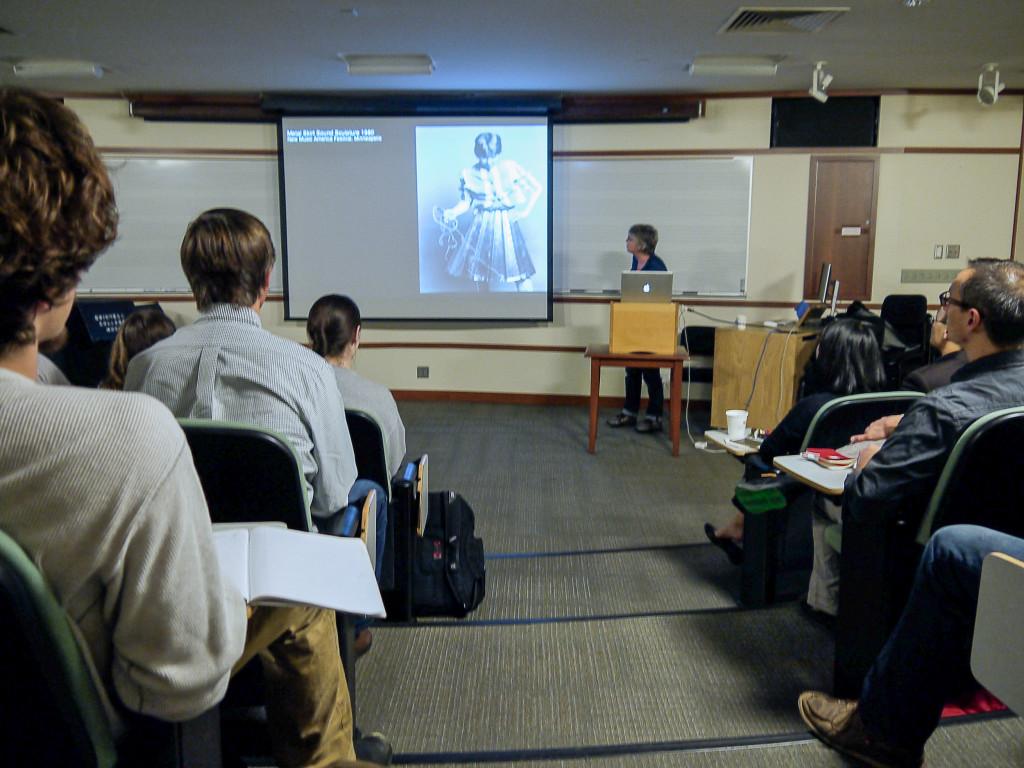Lily Bohlke
bohlkeli@grinnell.edu
Music will soon be coming from the Quad Dining Hall which is being filled with around 100 strings which are 100 feet long. These strings are part of sound artist and musician Ellen Fullman’s Long String Instrument installation as part of the Artists@Grinnell program. They are mounted into wooden resonator boxes and tensioned with tinning pins tightened into a block of wood. The instrument is played by Fullman with rosin-covered fingertips while walking along the string.

“This is a very large-scale installation for me,” Fullman said. “Everything I do is big, but this is especially big.”
Fullman began this project when she was studying sculpture but also had interest in performance art and music.
“I did things like tapping on pots and pans,” Fullman said. “I was making basic, ordinary sounds and manipulating them.”
A piece by another artist, Alvin Lucier, called “Music on a Long Thin Wire,” caused Fullman to wonder about the sounds she could make.
“I suspended a wire and started making sounds and I came across a phenomenon by accident called the longitudinal mode of vibration,” she said.
The longitudinal mode of vibration is when the sound wave travels back and forth along the length of the wire when friction sets the string in motion. This motion is different than that of many string instruments. Whereas in many string instruments the tightening of a string makes the pitch higher, on this instrument, it does not change. Similarly, the gage of the wire does not make a difference, while normally a fat string would create a lower pitch. The material of the wire, the density, is the only factor that changes the pitch.
“Bronze or brass wire is denser than steel and the wave moving through it is slower, it takes longer for it to travel,” Fullman said. “The pitch they produce, no matter how fine, is lower than steel.”
By taking this mode of vibration and expanding it to a big scale, Fullman is able to make something totally unique.
“The kind of sound it produces is different from any other instrument,” Fullman said.
Fullman uses this instrument to compose music and to explore harmonics and the physics of tuning.
“All this goes back to the Ancient Greeks when they came up with tuning modes—smaller subsets of sub-pitches that go together to produce a melody,” she said.
Fullman is hoping to engage a few students to rehearse with her and help her perform her instrument in the performance on Friday, Nov. 13.
Although no students at the school have ever played an instrument quite like this one, Fullman hopes to find students who have time to learn some key aspects. Fullman expects that percussionists could use a tool she created to play a sound on the wires that sounds similar to a harmonica. She also believes that some of the lower ranges do not require extensive experience to play well.
According to Fullman, this project is continually evolving.
“The project started with one string,” she said. “As I go, there’s more to learn and more to do, so I haven’t come to the end yet.”


































































